Though traditional resources often represent the marketing structure as consistent across most boards, there’s now a wide variety of structures that companies use, each one serving to support and prioritize different functions.
Which structure you choose is up to you, and’ll depend on your company culture and customer base.
In this article we will focus on:
- Types of organizational structures,
- The circular structure,
- Mechanical vs organic structures,
- The dangers of the silo effect.
Types of organizational structures
These are some of the most widespread types of organizational structures still in use today. It’s important to note that most companies now use a mix of two or more of these structures to make what’s aptly known as the Complicated Structure.
Functional
This is perhaps the most classic organizational approach. This is where the head of the team (be it CMO, Customer Marketing Manager, CEO, or others) leads a team of functional experts.
These experts will have a team themselves that focus on their subject area of expertise. This’ll lump customer marketing, customer success, customer services, sales enablement, etc, all together into their own respective teams.
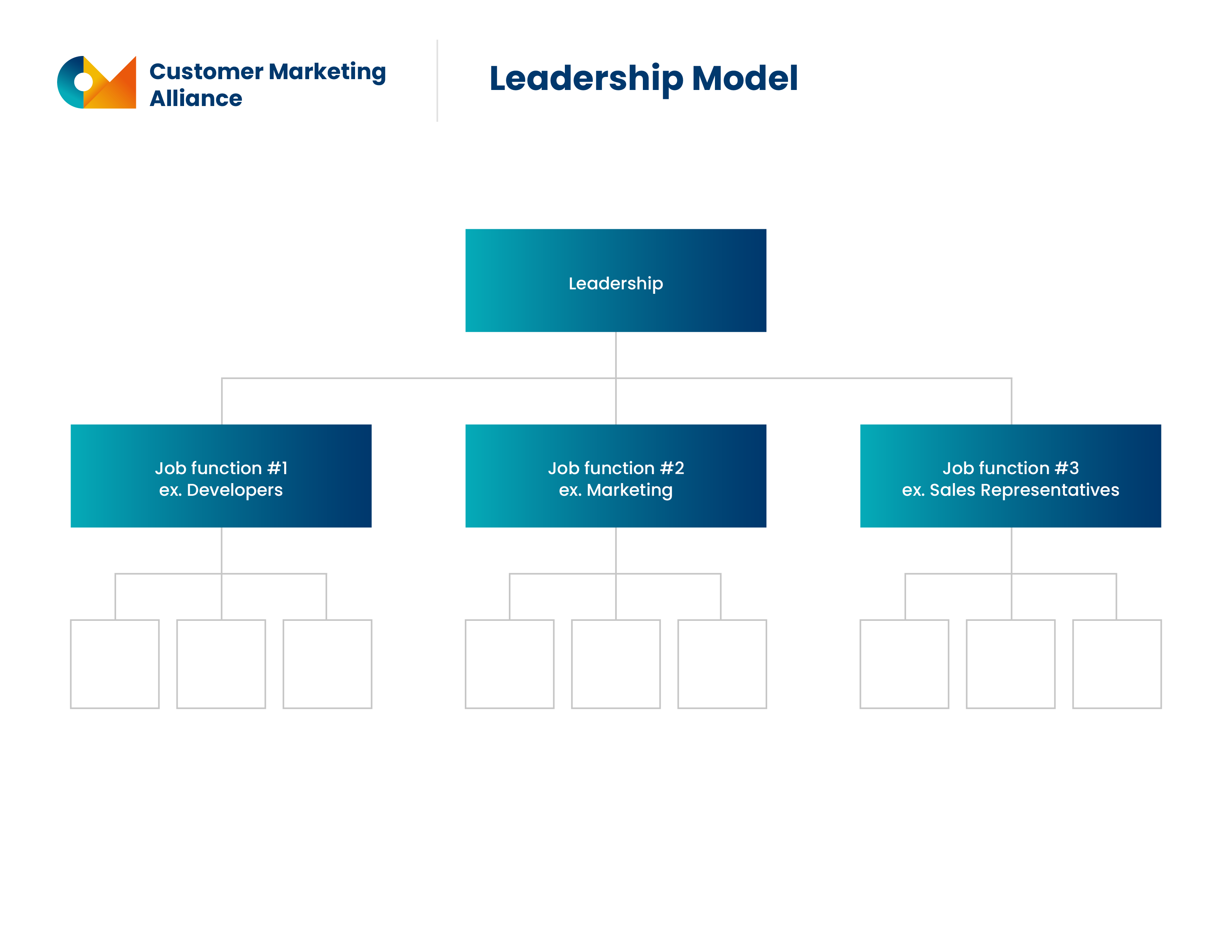
While these teams offer a high degree of specialization, they’re responsible for it in every iteration and capacity. This means dealing with all brands, customer groups, and geographical markers.
This structure works best with smaller businesses, but even then runs the risk of creating barriers between these teams. Where cross-functional collaboration is key, you don’t want the way you structure your teams to limit everyone's knowledge and communication.
Product or brand
Instead of specializations, this structure focuses on classifying the organization by its products or brands. This time the head manages brand or product leaders. These then have individual marketing, services, and sales teams under them for that one specific product or brand.
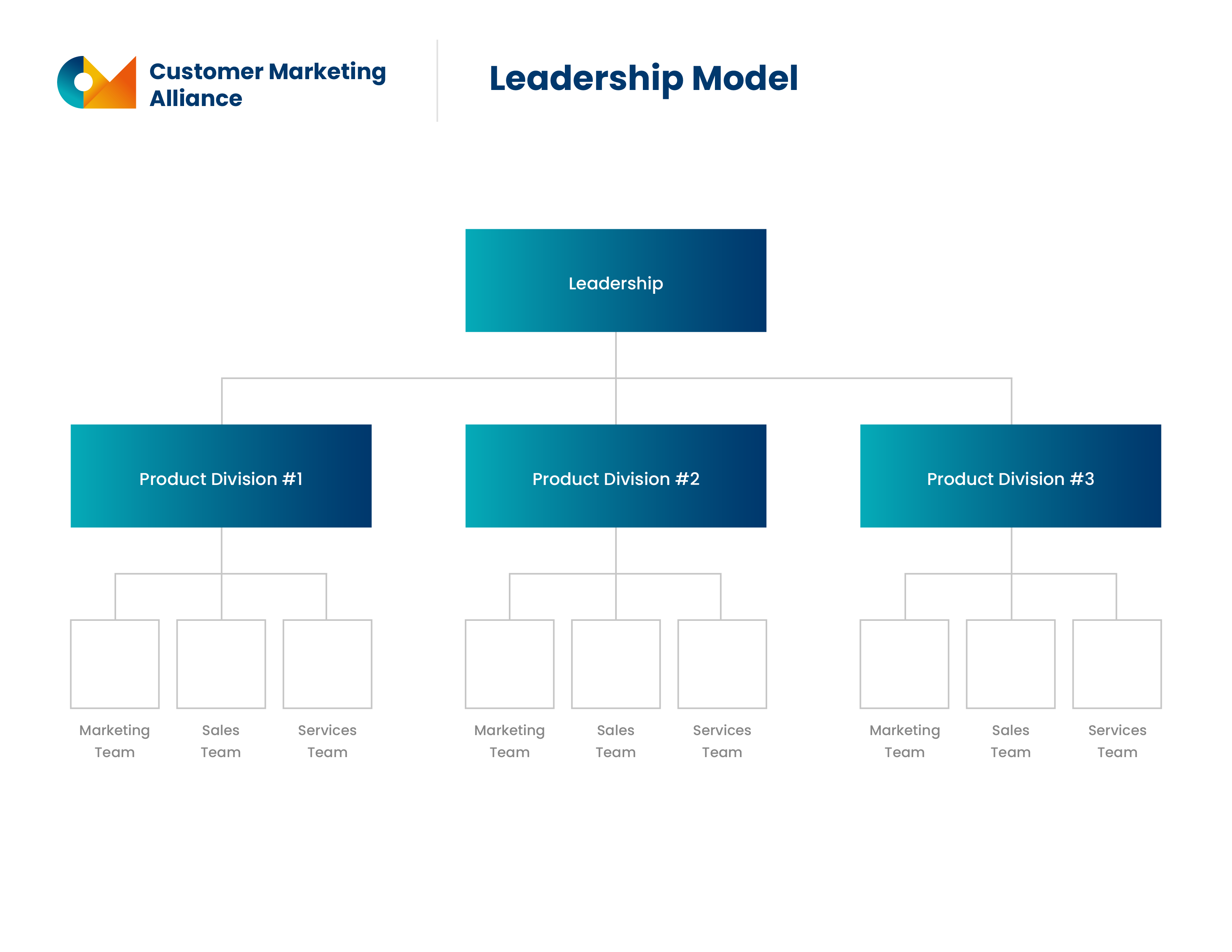
This way, brand and product leaders often utilize shared marketing expertise allowing for consistent brand representation. This is usually implemented by companies who’ve acquired brands and products that’re completely different from one another.
The downside of this type of structure is that there’s often a lot of repetition in resources as different teams will have the same goal but not be communicative when working toward that goal.
This structure’s also more difficult to scale due to how separate the product streams are from one another.
Geographical
This is for companies that operate a diverse range of locations be it locally, regionally, or internationally. This leans on the process of appointing geographic oriented marketing directors that each represented different regions/countries within the companies scope.
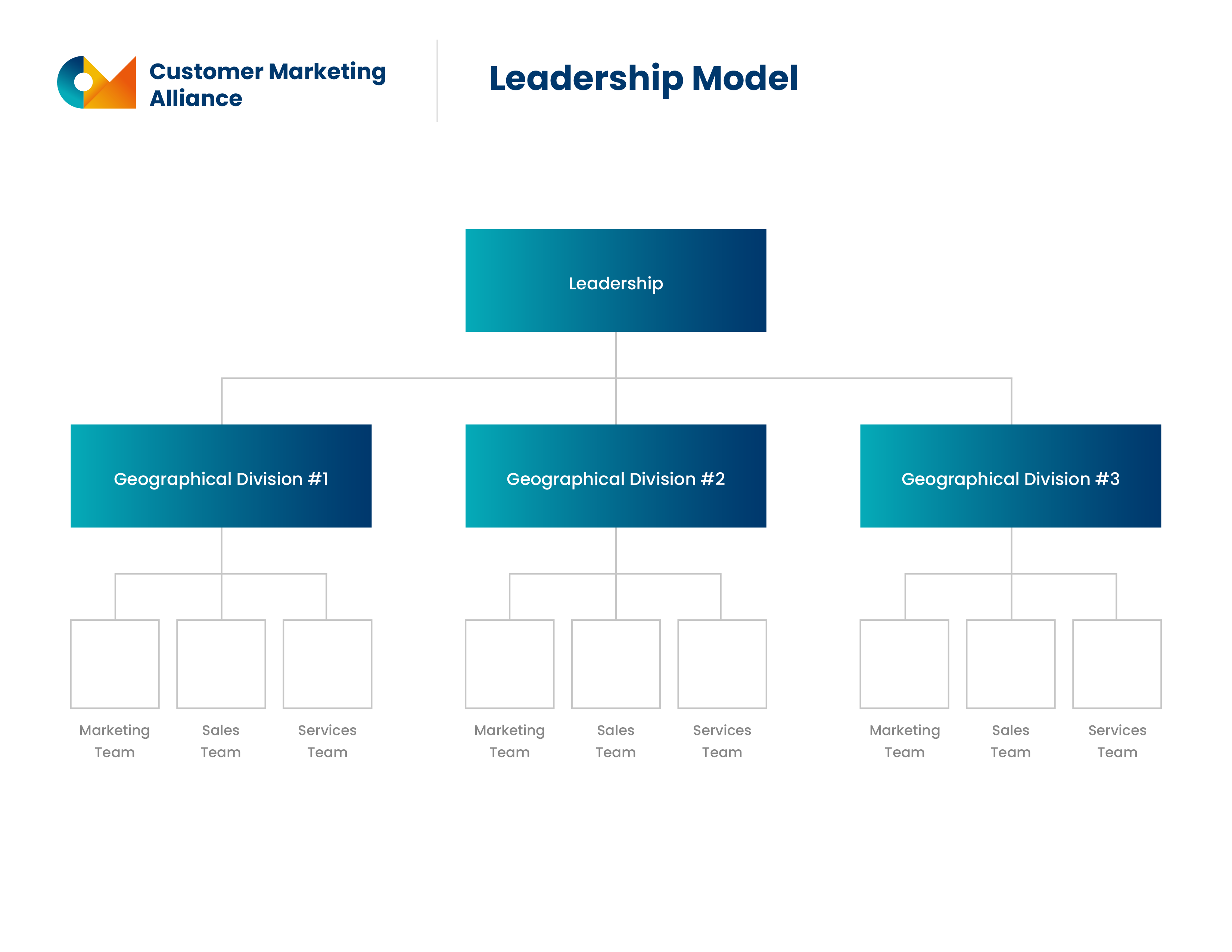
The main downside of this structure is that it decentralizes the leadership and decision-making processes. Divisions often begin working independently from the central hub just simply due to Geographic distance.
If an organization isn’t careful, they can also run the risk of competing against themselves during marketing campaigns.
Customer or market
Companies that have a variety of target audiences for their products may choose to categorize their teams based on customer or market groups.
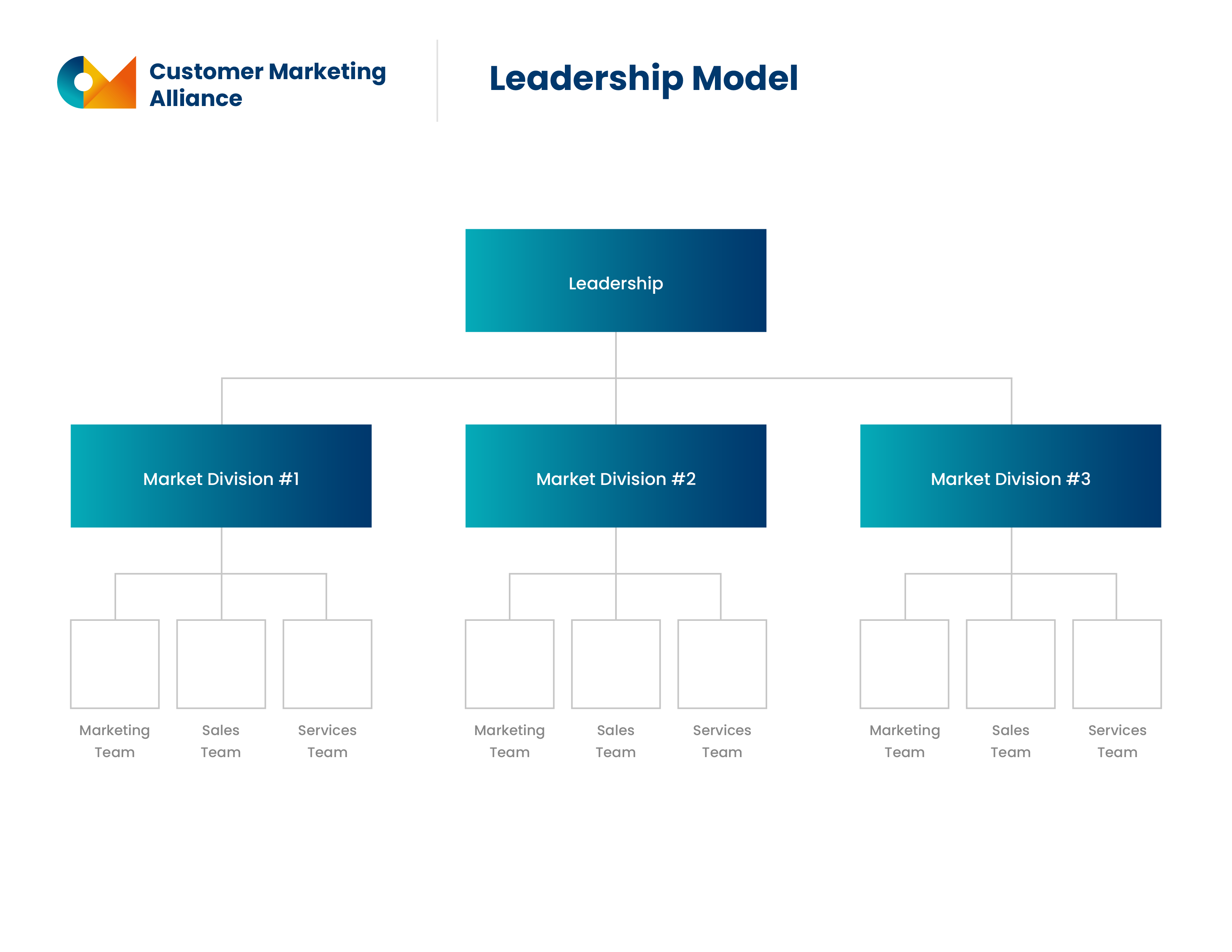
This means they can separate consumer segments, categorize by larger and smaller clients, or distinguish government, business, and customer buyers.
The downside of this style is that you can often silo or alienate groups of customers simply because they aren’t as big or loyal as others. This may run the risk of the company losing a whole section of their existing customer base.
The complicated organizational structure
Most companies deploy a structure that’s a mix of two or more of the previous formations, or others. This is quite often necessary due to the complex nature of modern marketing.
The problem is that its complicated nature can result in unclear leadership and communication lines resulting in an unproductive system.
One mistake is assuming that company structure is linear. Regardless of which sector a company forms their structure around, be it geographical, market, or functional, they all look the same on paper (which you can see in the charts in the previous section). Roles are in boxes, relationships are lines, and authority decreases from the top down.
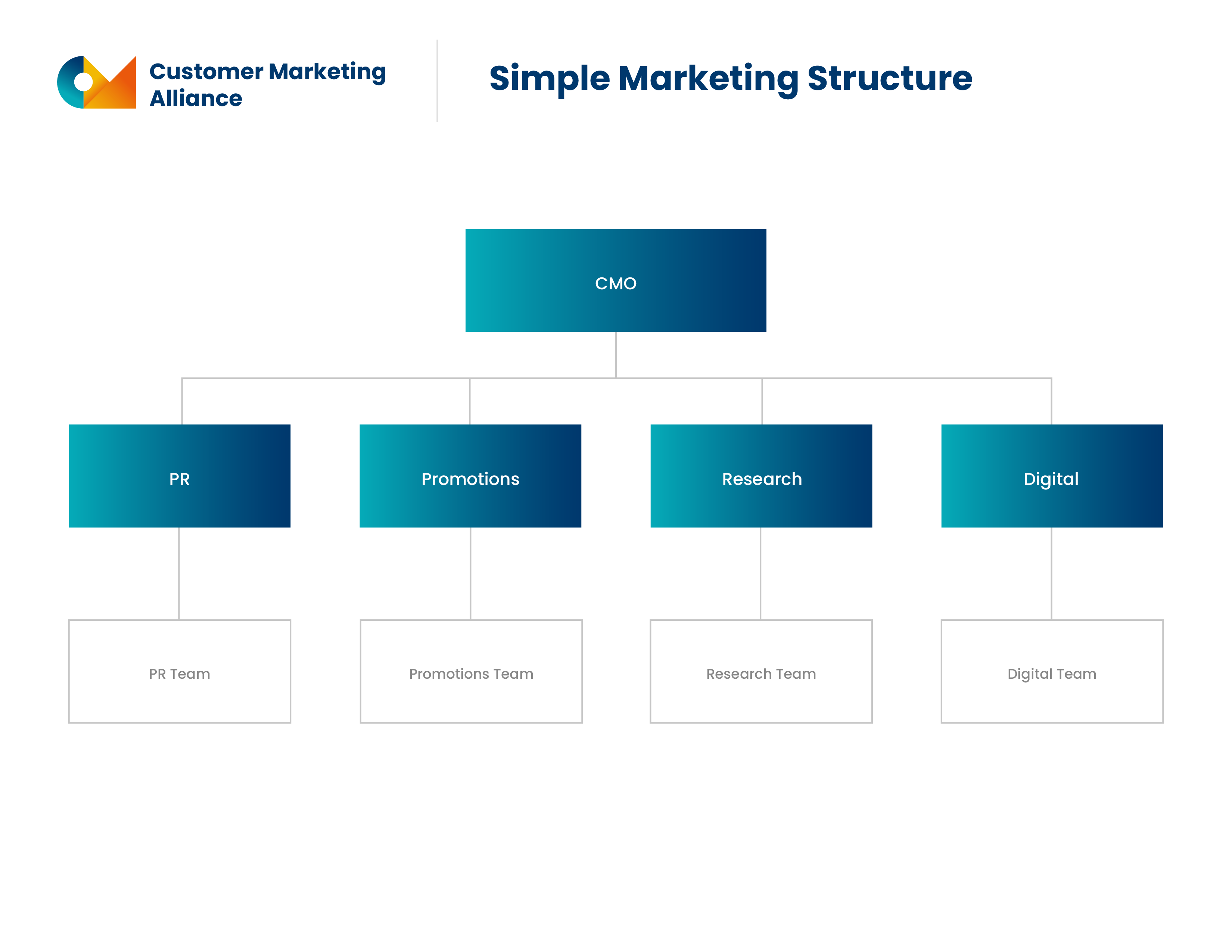
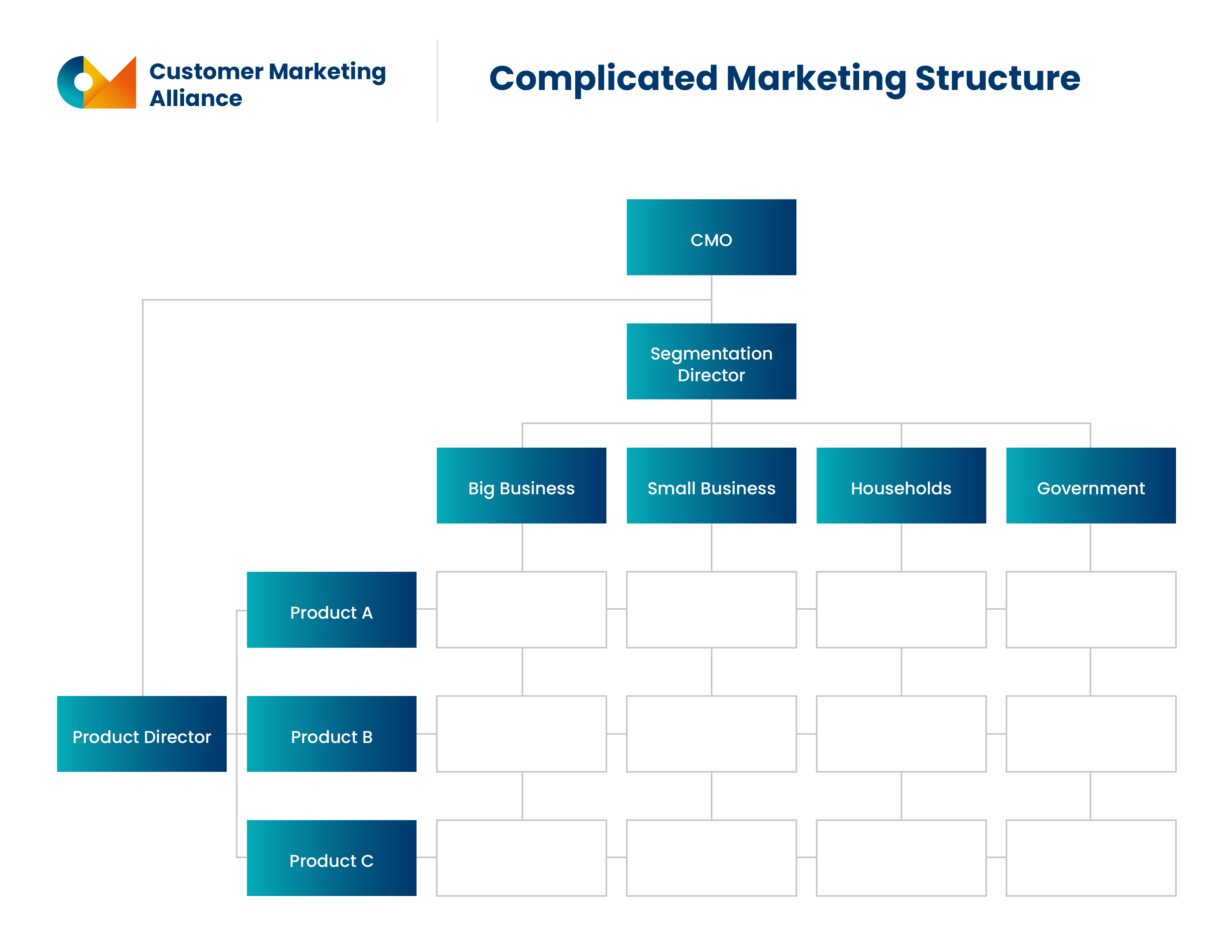
One way of de-siloing the organizational process is to make a visual distinction for employees and team members to better understand the cross-functional nature of all businesses.
This is known as the Circular Organizational Structure and places the head (CMO or any other manager) in the center of the structure. From there, the rest of the organization branches out. This helps team members understand that there’s no restrictions on who people can talk to in order to convey or find out information.
Those on the outside circle will first go to anyone in the next circle in. But because these circles are connected, it allows people to understand the importance of going to the people they need to with the information they have, and aren’t cut off by levels of authority.
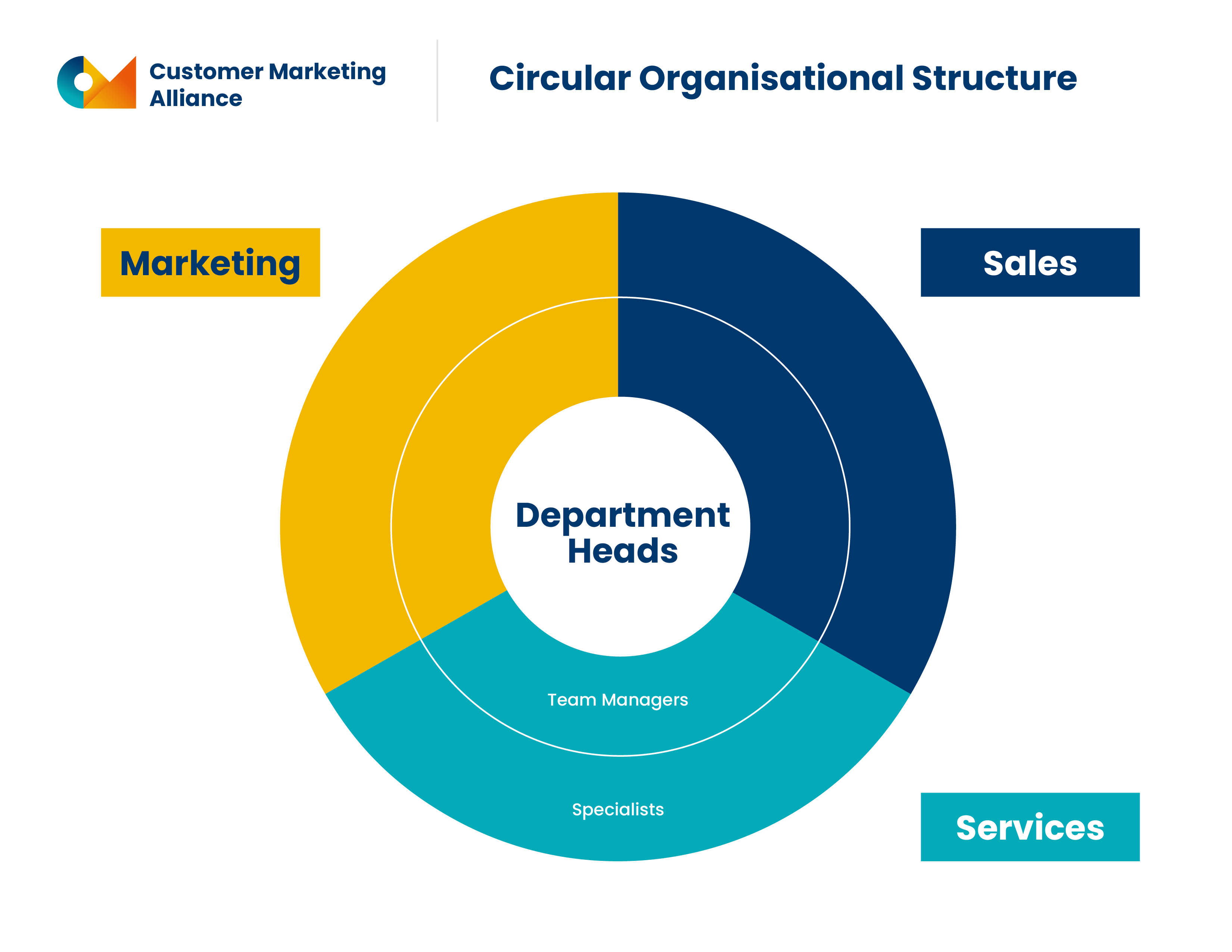
Some of the main characteristics for this circular structure are:
- Orientation towards business growth. Expansion’s more visually accessible in this format.
- Collective purpose. When all teams understand that they’re moving toward a shared goal, then there’s a much healthier atmosphere of collaboration rather than competition.
- Clear alignment of internal functions. Knowing who precedes and proceeds you in the customer journey’s vital for understanding not only others' roles in the organization, but your own as well.
- Defined roles and responsibilities. Following on from the last point, understanding your role is vital to understanding where you fit in the overall organizational structure and valuing the significance of your position in terms of business success.
- Vibrant research and data-driven activities. Enthusiasm for your product and business comes from understanding and learning about it. Collaborating not only on task, but on development (personal and departmental) can help foster natural networks of communication.
- Cross-platform efforts. Approaching marketing from a united front can help you prevent wires getting crossed and streamline a successful and consistent marketing strategy that accurately represents your organization and your products.
In the book, Advanced Marketing Management: Principles, Skills and Tools, Nikolaos Dimitriadis emphasizes this importance, writing that:
“Top-performing marketers are more likely to be part of a networked organization and meet more frequently with colleagues from different functions to create and deliver successful customer journeys.”
Mechanistic vs organic organizational structures
Organizational structures tend to fall under the umbrella terms of organic and mechanical. You can look at it like a spectrum with organic being one extreme and mechanical being the other.
Mechanical is the traditional, top-down approach we mentioned earlier. Organic is alternatively a representation of a more flexible, collaborative approach.
Mechanical
Mechanical structures are rigid in design. They often have high centralization, specialism, and formalization. They’re very controlled in the way they structure work, and departments are strict in what they’re designed and permitted to do.
The positives of these formal structures are that there’s no confusion in what everyone’s role is, but can often lead to siloing due to its rigidity. As a company grows, and the authority structure grows more complicated, the mechanical structure can help to keep everyone informed on how your company's structure works.
Organic
Organic structures are known for being the opposite of mechanical structures with low centralization, specialization, and formalization. Several teams may be headed by one's person, and teams may collaborate on projects as needed rather than based on their specific role.
While this type runs the risk of confusion in certain areas, especially if clear communications channels aren’t set up to support it, this type can be extremely helpful for organizations in fast-moving industries.
Organic approaches can also help to stabilize a business after a period of instability, allowing the work to be done by the whole company rather than overloading it in the specialized teams responsible.
The silo effect
The Silo Effect was a term coined in 2010 and is used by businesses to refer to the “lack of communication and common goals between departments in an organization”.
When departments shift to an inward focus, the external communications end up being neglected. As a result knowledge isn’t efficiently shared between the relevant people and can result in a company wide loss of productivity, with extreme cases having a direct impact on a company's revenue and bottom line.
The silo mentality can stem from an “I win, you lose” mentality and is also present in collaborations between companies as well as within a companies own structure. This can result in lower quality work being produced, or the flow of information being hindered.
One way this can be prevented is by refusing to allow people to ‘claim ownership’ over specific corners of the company. A centralized system may help with this. Another way can be to encourage teams to meet and share their learning.
Some other tactics are as follows:
- Create procedures where data can be collected once, rather than multiple times.
- Allow teams to share their ‘best practices’ with others.
- Invest in human resource training to encourage a creative and collaborative mindset.
- Encourage feedback, and allow your teams to get involved in developing new company approaches.
- Have a physical suggestion box, and take the suggestions seriously. These allow for anonymous feedback and are a valuable source of information that you mightn’t get in face-to-face meetings. Complaints can be analyzed to identify the true underlying problems with your system of work.
- Have regular meetings and conversations that aren’t team specific. As soon as these become a part of your company culture, it changes the pattern of work for these people and can help eliminate the “I win, you lose’ mindset.
Creating united goals and metrics
Metrics and indicators of success are vital to ensure your whole organization’s aiming for the same goal with united developments and efforts. But metrics themselves can be a bit mystifying.
Both Key Performance Indicators (KPIs) and Objective and Key Results (OKRs) are thrown around during conversation a lot, and knowing the difference between the two can be a little mystifying.
But not to worry! We’ll help you understand the differences between the two and why they’re important.
We’ll cover:
🌗 What a KPI is
🌓 What an OKR is
🤔 What the differences are, and
🌟 Why these differences matter for customer marketers.




